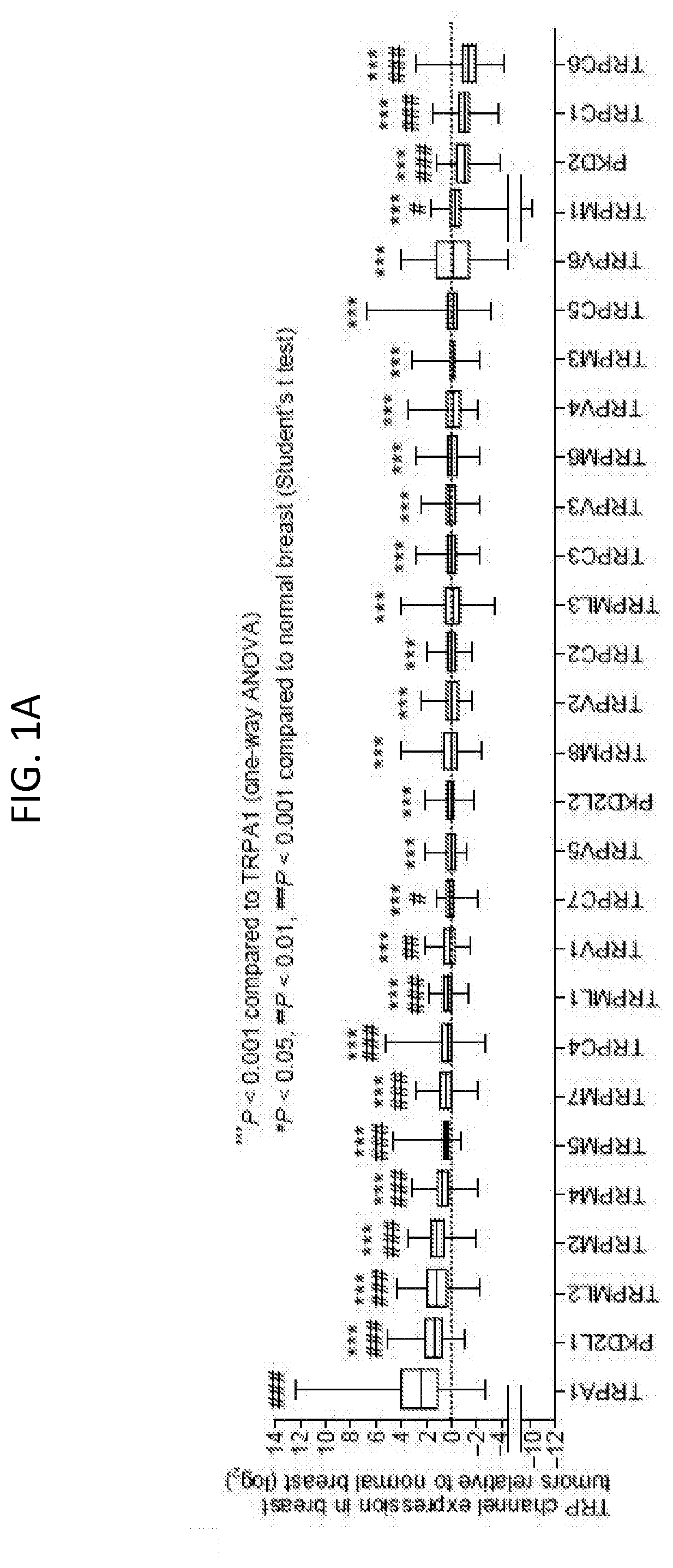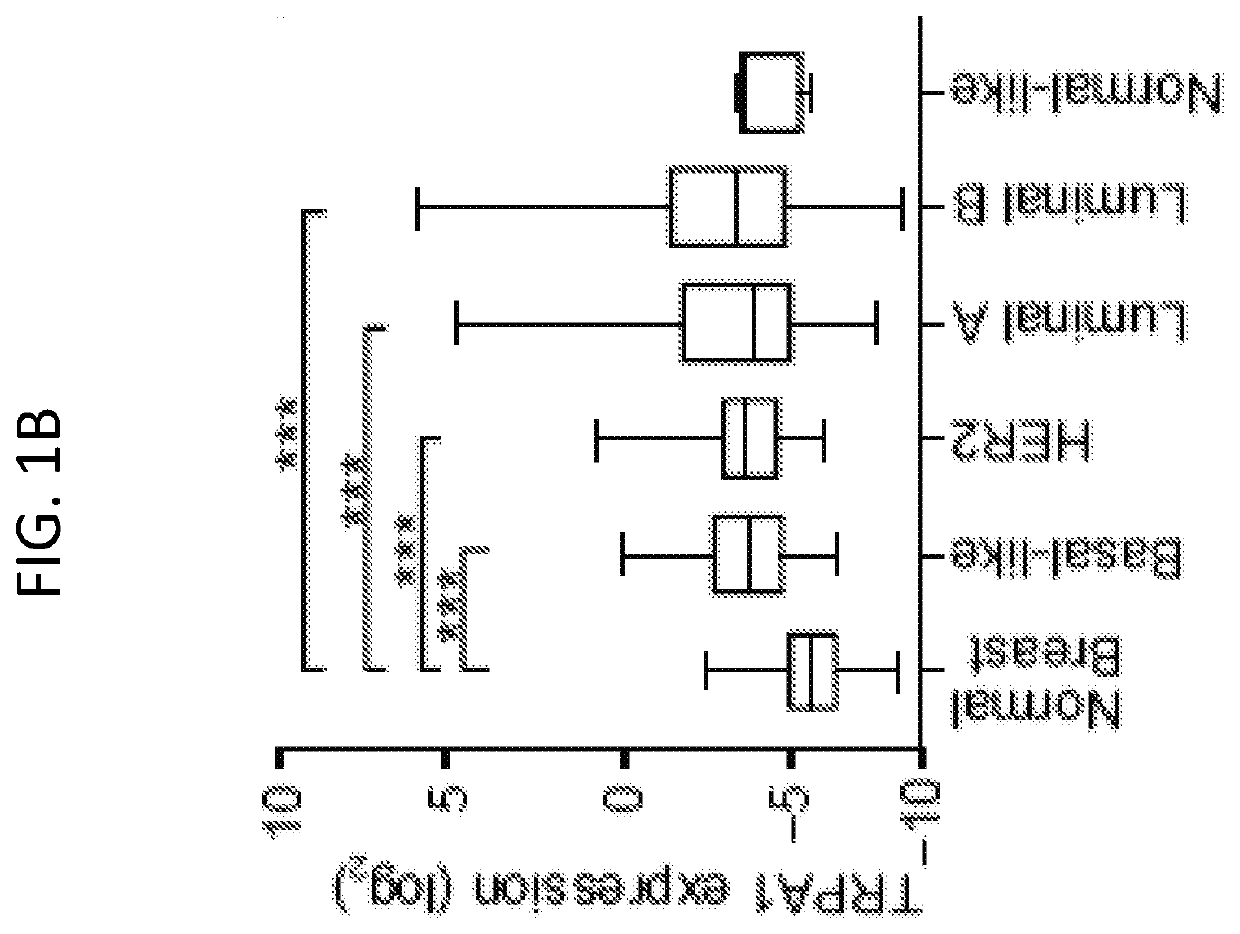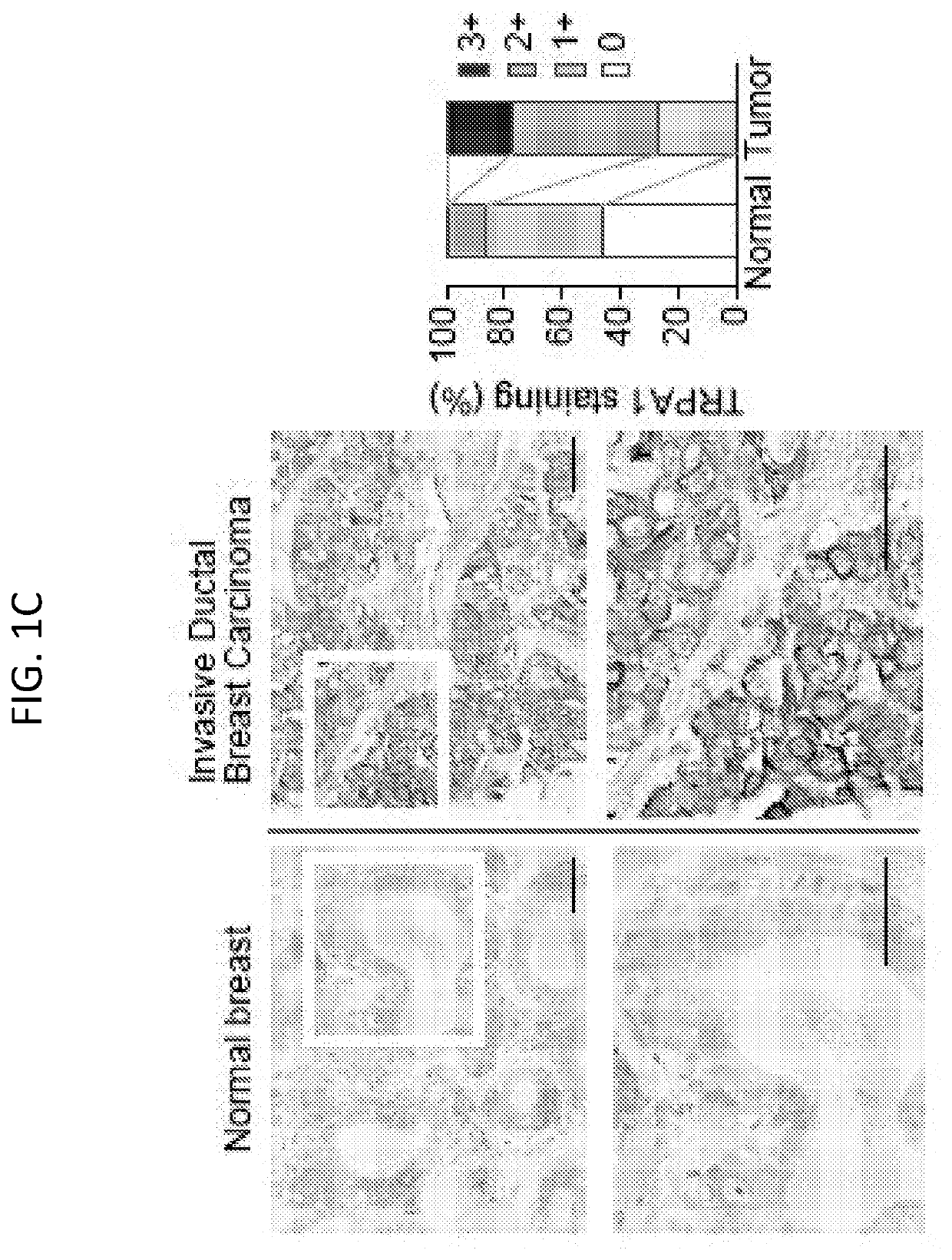Methods of use for trp channel antagonist-based combination cancer therapies
- Summary
- Abstract
- Description
- Claims
- Application Information
AI Technical Summary
Benefits of technology
Problems solved by technology
Method used
Image
Examples
example 1
and Methods
[0211]Animals and In Vivo Procedures
[0212]All animal studies were performed according to protocols approved by the Institutional Animal Care and Use Committee, the Standing Committee on Animals at Harvard University. One million HCC1569 cells stably expressing either TRPA1 or GFP (control) shRNAs were injected into cleared mammary fatpads of 8-week-old female NOD-Rag1null IL2rgnull (NRG) mice. Tumor volume (mm3) was monitored by caliper measurements in two perpendicular dimensions (the formula: (d2×D) / 2, where d and D represent the shortest and longest diameters, respectively) at the indicated time points. After tumors reached 3 to 5 mm in diameter, animals were randomized into the following treatment arms: (i) 37.5 mg / kg carboplatin or (ii) its vehicle (H2O) administrated via intraperitoneal injection for HCC1569 cell-transplanted animals; (i) oral administration of 30.0 mg / kg AM-0902, (ii) intraperitoneal administration of 37.5 mg / kg carboplatin, (iii) oral administrati...
example 2
Highly Expressed in Breast Tumors
[0227]To assess the expression of TRP channel subtypes in breast tumors, we first analyzed their mRNA expression profiles using the Cancer Genome Atlas (TCGA) dataset. A subset of TRP channels exhibited altered expression in breast tumors relative to normal mammary tissues (FIG. 1A); upregulated: TRPA1, PKD2L1, TRPML2, TRPM2, TRPM4, TRPM5, TRPM7, TRPC4, TRPML1, TRPV1, and TRPC7, downregulated: TRPM1, PKD2, TRPC1, and TRPC6). Within this subset, TRPA1, which is predominantly expressed in sensory neurons, was the most highly upregulated (P2 test: P=0.0399]. Prominent membranous and cytoplasmic TRPA1 staining was detected in 6 / 11 breast tumors (with an additional 3 / 11 showing low intensity staining) from the Human Protein Atlas initiative (www.proteinatlas.org / ).
example 3
ression Promotes Cell Survival in Response to Exogenous Oxidative Stress or Loss of Matrix Attachment
[0228]We investigated the impact of exogenous TRPA1 expression on viability of MCF-10A mammary epithelial cells in response to treatment with H2O2, a stable, membrane permeable cellular ROS molecule. H2O2 elicited enhanced [Ca2+]i increases in TRPA1-expressing cells in a concentration-dependent manner (FIGS. 1D and 1E). We removed EGF from MCF-10A culture medium to mimic the situation of detachment and examined the effect of H2O2 treatment on cell viability. TRPA1 expression increased live cell number and suppressed cell death and apoptosis in response to H2O2 (FIG. 1F).
[0229]We next examined the effects of TRPA1 on the intracellular concentration of H2O2 ([H2O2]i), [Ca2+]i, and survival in ECM-detached cells cultured on non-adherent (poly-HEMA-coated) plates. Flow cytometry analysis with the H2O2-specific probe peroxy green-1 showed that detachment induced a significant increase in ...
PUM
| Property | Measurement | Unit |
|---|---|---|
| Level | aaaaa | aaaaa |
Abstract
Description
Claims
Application Information
 Login to View More
Login to View More - R&D
- Intellectual Property
- Life Sciences
- Materials
- Tech Scout
- Unparalleled Data Quality
- Higher Quality Content
- 60% Fewer Hallucinations
Browse by: Latest US Patents, China's latest patents, Technical Efficacy Thesaurus, Application Domain, Technology Topic, Popular Technical Reports.
© 2025 PatSnap. All rights reserved.Legal|Privacy policy|Modern Slavery Act Transparency Statement|Sitemap|About US| Contact US: help@patsnap.com



